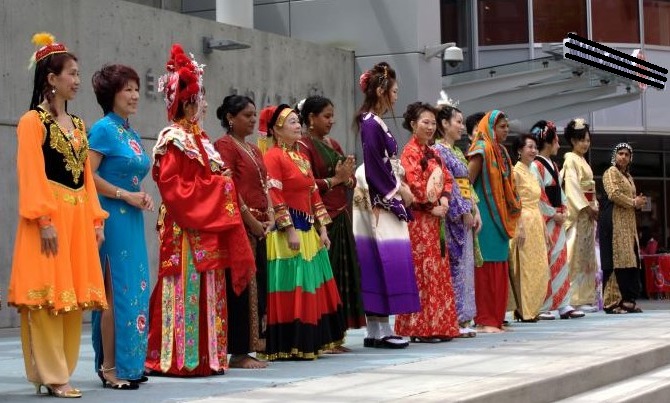
Table of Contents
The realm of Asian cultural clothes presents a fascinating tapestry of traditions, symbolism, and artistry. Spanning a vast and diverse continent, these garments are not just articles of clothing but are deeply intertwined with the history, identity, and values of various Asian cultures.
A. Definition of Asian Cultural Clothes
Asian cultural clothes refer to the traditional garments originating from the countries and regions of Asia. These clothes are distinguished by their unique designs, fabrics, patterns, and styles, which are often specific to a particular country or ethnic group within Asia. From the intricate sarees of India to the elegant kimonos of Japan, each piece of clothing carries its own story and significance.
B. Importance and Significance in Asian Cultures
In many Asian cultures, traditional clothing is much more than just a fashion statement. It embodies the cultural heritage, religious beliefs, and societal norms of a community. These garments are often worn during important ceremonies, festivals, and rites of passage, signifying respect and adherence to cultural traditions. They serve as a medium to express cultural identity and pride, and in many cases, they are considered as heirlooms passed down through generations.
C. Diversity and Richness of Asian Clothing Traditions
The diversity and richness of Asian clothing traditions are a testament to the vast cultural landscape of the continent. Each region in Asia has developed its own distinct clothing style, influenced by factors such as climate, local resources, historical interactions, and social structures. This variety is not just limited to different countries but can also be seen within individual countries, reflecting the multicultural and ethnic diversity of the Asian continent. The result is an extraordinary array of garments, each with its own unique beauty and story, contributing to the rich cultural tapestry of Asia.
Overview of Asian Cultural Clothes
Asian cultural clothes represent a diverse spectrum of traditional attire, each with its own history and cultural significance. These garments are not only a form of expression but also serve as a link to the past, showcasing the rich heritage of various Asian countries.
A. Traditional Attire
- China: Traditional Chinese clothing, such as the Cheongsam (Qipao) and Hanfu, reflects the country’s long history and aesthetic sensibilities. These garments are known for their elegant silhouettes, intricate designs, and symbolism.
- India: Indian traditional attire is renowned for its vibrant colors and diverse styles. Sarees, Sherwanis, and Lehengas are some of the most iconic garments, each varying significantly across different regions, reflecting the country’s cultural diversity.
- Japan: Japanese traditional clothing includes the Kimono and Yukata. These garments are known for their unique cuts, delicate fabrics, and beautiful patterns, often symbolizing various cultural aspects and seasonal changes.
- Korea: The Hanbok is the traditional Korean attire, characterized by bright colors and simple lines without pockets. The Hanbok represents a significant part of Korea’s national history and cultural identity.
- Southeast Asia (e.g., Vietnam, Thailand, Indonesia): Each of these countries has its own unique traditional attire. For example, the Ao Dai in Vietnam, the traditional Thai dress in Thailand, and the Batik fabric styles in Indonesia. These garments are deeply rooted in each nation’s cultural and historical context.
B. Historical Context
- Evolution of Traditional Clothing: Traditional clothing in Asia has evolved over centuries, influenced by various historical events, trade relations, and cultural exchanges. The evolution reflects changes in aesthetics, materials, and social norms of different eras.
- Influence of Socio-cultural Factors: Factors such as religion, social hierarchy, and regional climates have significantly influenced the design and function of traditional Asian clothing. These garments often served as indicators of social status, regional identity, and adherence to cultural values.
Chinese Traditional Clothing
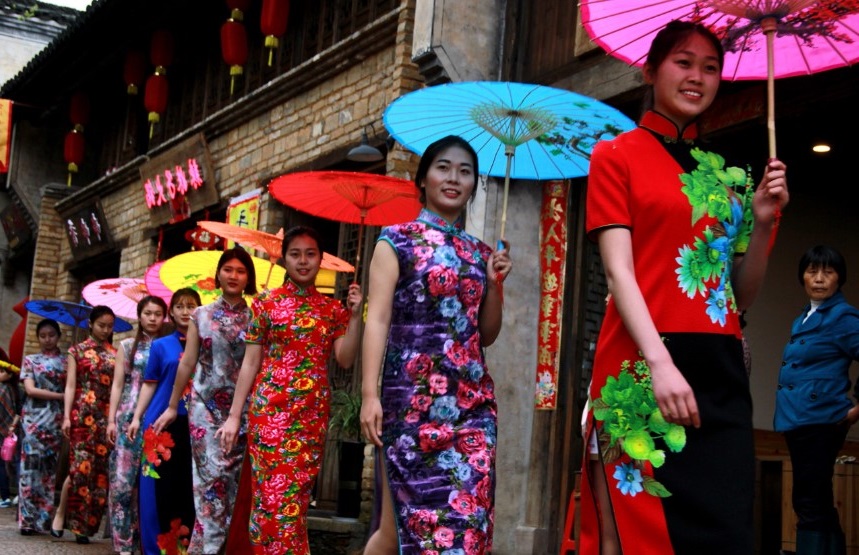
A. Hanfu
- History and Evolution: Hanfu, which literally means “Han clothing,” has a history that dates back over 3,000 years. It was the traditional dress of the Han Chinese people and evolved through various dynasties, each period adding its own distinctive elements to the Hanfu.
- Types of Hanfu: There are several types of Hanfu, each suited for different occasions and social statuses. Common styles include the Shenyi (a type of robe), Ruqun (a blouse-skirt combination), and the Changpao (a long robe). The styles vary in terms of sleeve size, garment length, and decorative patterns.
- Significance in Chinese Culture: Hanfu is more than just clothing; it’s a symbol of Chinese culture and heritage. It embodies the aesthetics, philosophy, and social ideals of the Han ethnicity. Recently, there has been a revival of Hanfu as a way to reconnect with and celebrate Chinese cultural identity.
Indian Traditional Clothing
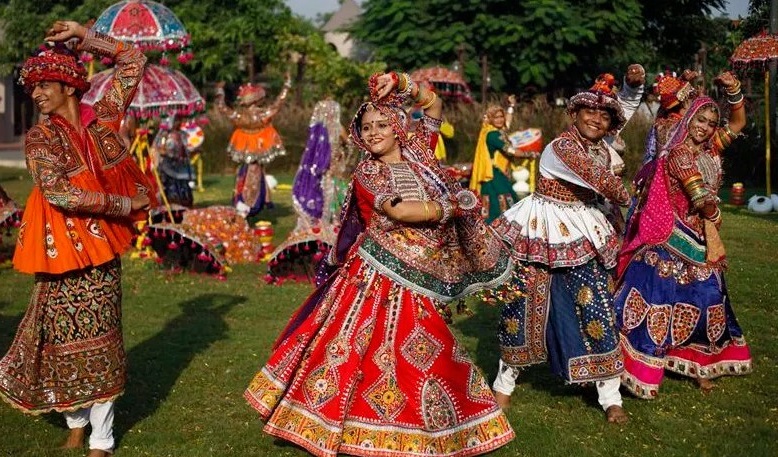
Cultural Oriental Dress, The traditional clothing of India is as diverse and vibrant as its culture, reflecting the rich tapestry of its history, religions, and regional differences.
A. Sari
- Origin and History: The sari, a timeless garment, has been worn in the Indian subcontinent for over 5,000 years. Its origin traces back to the Indus Valley Civilization, making it one of the world’s oldest known items of clothing still in use.
- Regional Variations: The style, fabric, and draping method of saris vary greatly across different regions in India. From the heavy silks of South India to the fine muslins of Bengal, each region has its own unique sari tradition.
- Cultural Importance: The sari is deeply embedded in Indian culture, symbolizing grace, tradition, and cultural pride. It’s a staple attire for many Indian women on various occasions, from daily wear to special events like weddings and festivals.
B. Dhoti, Sherwani, and Other Traditional Clothing
- Diversity Across Regions: India’s diverse geography and cultural spectrum have led to a variety of men’s traditional wear. The dhoti, worn in many parts of India, varies in style and color regionally. The sherwani, a long coat-like garment, is often worn for formal occasions, especially in North India.
- Occasions for Wearing Specific Attire: Specific attire is chosen based on the occasion, ranging from daily wear to special ceremonies. For instance, sherwanis are typically worn for weddings and formal events, while dhotis are often worn for religious ceremonies and festivals.
Japanese Traditional Clothing
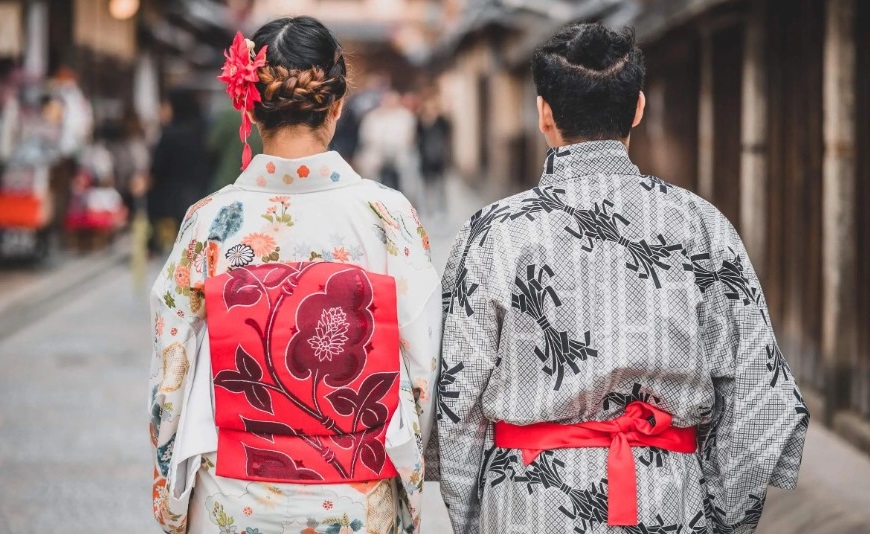
A. Kimono
- Historical Background: The kimono, with its origins in the Heian period (794-1185 AD), has evolved from a simple garment to a symbol of Japanese culture and identity. Over the centuries, the kimono has undergone various transformations in style, fabric, and design.
- Types of Kimono: There are several types of kimono, each suited for different occasions and social statuses. Formal kimonos, like the Furisode (with long, flowing sleeves) are worn by young, unmarried women, while the Homongi is worn for parties or formal events.
- Rituals and Ceremonies: Kimonos play a central role in Japanese rituals and ceremonies, including weddings, tea ceremonies, and festivals. The choice of kimono often reflects the wearer’s age, marital status, and the formality of the occasion.
B. Yukata and Other Traditional Japanese Attire
The yukata is a casual summer kimono, typically made of cotton, worn at festivals and fireworks events. Other traditional attire includes the Hakama, a type of wide-legged trousers, and the Happi, a coat-like garment usually worn during festivals.
Korean Traditional Clothing
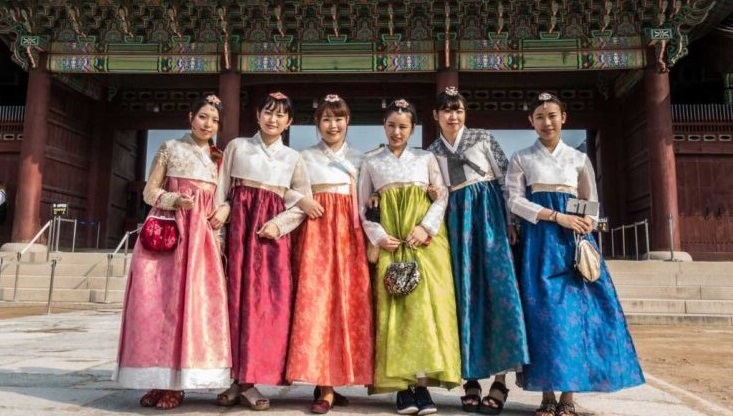
A. Hanbok
- Components and Designs: The hanbok typically consists of a jeogori (a jacket or blouse) and a chima (a full, wrap-around skirt) for women, and a jeogori with baji (pants) for men. The designs are noted for their simple lines and natural silhouettes.
- Occasions for Wearing: Hanbok is traditionally worn during Korean festivals, celebrations such as the Lunar New Year, weddings, and family rites. It’s a symbol of Korean culture and heritage, representing respect and propriety.
- Modern Adaptations: The hanbok has seen modern adaptations in recent years, blending traditional designs with contemporary fashion. These modern hanboks are often more practical and comfortable, making them suitable for everyday wear while still preserving the essence of traditional Korean attire.
Southeast Asian Traditional Clothing
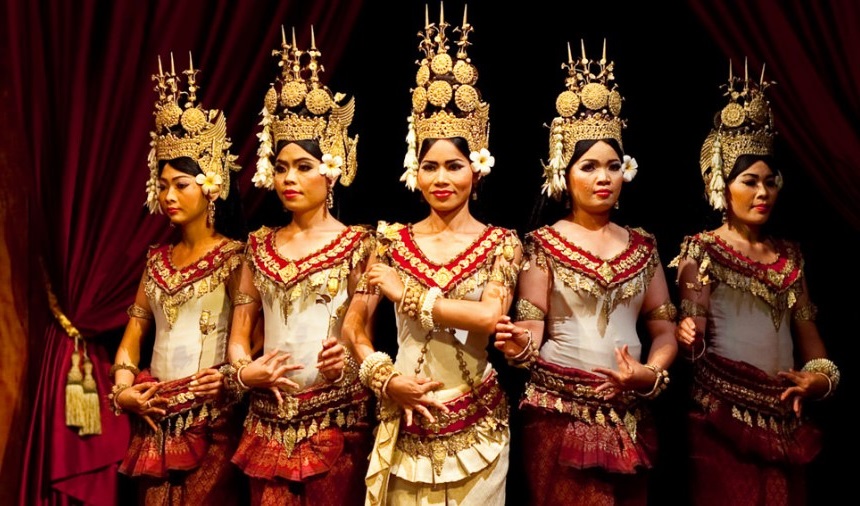
Southeast Asia, known for its cultural diversity and rich history, offers a wide range of traditional clothing, each piece reflecting the unique heritage and customs of its country.
A. Ao Dai (Vietnam)
The Ao Dai is a symbol of Vietnamese culture and elegance. It is a fitted, full-length dress worn over trousers, known for its graceful and flowing silhouette. Historically, the Ao Dai has evolved from influences of Chinese occupation and French colonialism, leading to its modern form which is both traditional and contemporary.
B. Batik (Indonesia)
Batik is not just a clothing item but an art form, primarily found in Indonesia. This technique of wax-resist dyeing applied to the whole cloth is famous worldwide. Batik is used in various garments, including dresses, shirts, and sarongs. The patterns and designs in Batik often carry cultural significance, representing local myths, nature, and daily life.
C. Traditional Attire in Thailand, Malaysia, and Other Countries
In Thailand, the traditional attire varies, with the Thai Silk being internationally renowned. The Pha Sin, a long, tubular skirt, is commonly worn by Thai women. In Malaysia, the Baju Kurung—a loose-fitting, full-length dress paired with a skirt, and the Baju Melayu for men—are widely worn. Other Southeast Asian countries, like Myanmar with the Longyi and the Philippines with the Barong Tagalog, also have unique traditional attires, each reflecting the nation’s cultural identity.
Cultural Significance and Symbolism
A. Colors, Patterns, and Fabrics
Colors, patterns, and fabrics in Asian traditional clothing are not arbitrary; they are deeply symbolic and often have cultural, religious, or social significance. Red, for example, often symbolizes good luck and happiness in Chinese and Indian cultures. The intricate patterns in Batik or the delicate embroidery on a Kimono can represent local flora, fauna, or traditional tales.
B. Symbolism in Motifs and Designs
Motifs and designs in traditional clothing often carry significant meanings. Dragons and phoenixes in Chinese garments symbolize power and auspiciousness. In Indian clothing, motifs like the peacock or lotus might represent beauty, purity, or spirituality. These symbols are integral to the cultural narrative and are often used in ceremonial or festive attire.
C. Religious and Ceremonial Aspects
Traditional clothing is often closely linked with religious and ceremonial practices in Asia. For instance, certain garments are required for religious ceremonies, like the Dhoti in Hindu rituals. In many Asian Cultural Clothes, specific outfits are designated for weddings, funerals, and other significant life events, each chosen for its cultural relevance and symbolic importance. This connection underscores the deep intertwining of clothing with the cultural and spiritual life of Asian societies.
Modern Influence and Adaptations
The dynamic nature of fashion has allowed for the blending of traditional Asian clothing with contemporary styles, creating a new wave of cultural expression that resonates both within Asia and globally.
A. Fusion of Traditional and Modern Styles
Designers are increasingly integrating elements of traditional Asian Cultural Clothes attire into modern fashion. This fusion is evident in the use of traditional fabrics and patterns in contemporary clothing, reimagining classic designs with modern cuts and functionalities. This trend has not only revived interest in traditional attire but has also made them more accessible and wearable in everyday life.
B. Globalization and Impact on Asian Cultural Clothing
Globalization has significantly influenced Asian cultural clothing, introducing new materials, techniques, and styles from around the world. While this has led to greater innovation and diversity in designs, it also poses challenges in maintaining the authenticity and traditional aspects of these garments. Moreover, the international fashion industry’s interest in Asian designs has brought greater visibility to these traditional attires on a global stage.
C. Fashion Shows and Designers Promoting Asian Cultural Attire
Fashion shows around the world increasingly feature Asian cultural attire, showcasing their richness and diversity to a global audience. Designers from Asian Cultural Clothes countries are playing a crucial role in this, bringing traditional clothing to the forefront of the international fashion scene and reinventing them in ways that honor their cultural origins while appealing to modern sensibilities.
Challenges and Preservation Efforts
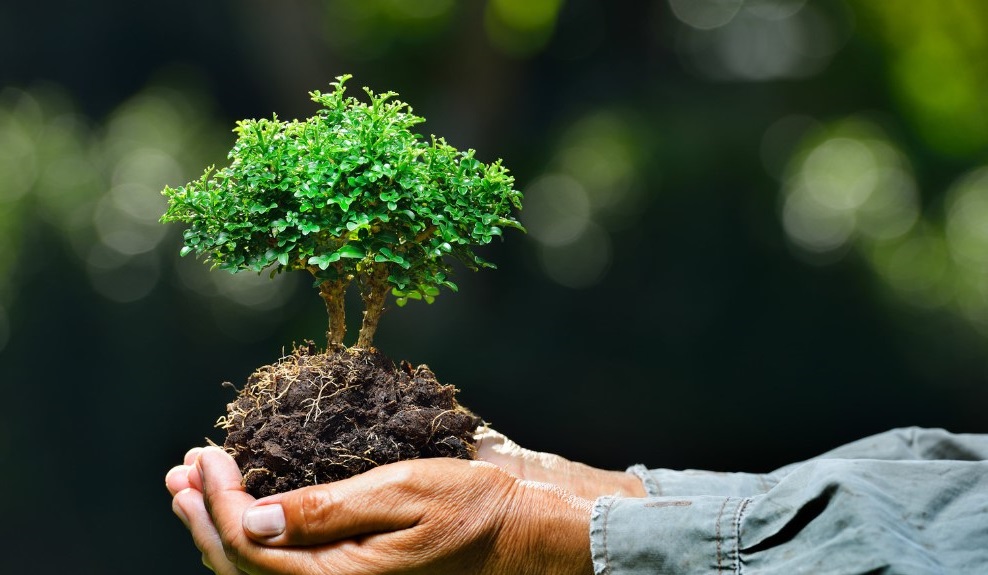
Traditional Eastern Apparel, As with many cultural traditions, Asian traditional clothing faces its own set of challenges in the modern world, but efforts are being made to preserve these important cultural artifacts.
A. Threats to Traditional Clothing
One of the main threats to traditional clothing is the overwhelming influence of Western fashion and the homogenization of global fashion trends. Additionally, the skills and techniques required to create these traditional garments are at risk, as fewer artisans are continuing these practices.
B. Initiatives for Preserving and Promoting Cultural Attire
Many Asian countries are taking steps to preserve their traditional clothing. These include educational programs to teach the traditional arts, government initiatives to promote cultural attire in schools and public life, and support for artisans and designers working with traditional styles. Fashion events specifically focusing on traditional attire also play a significant role.
C. Role of Museums and Cultural Institutions
Museums and cultural institutions are crucial in the preservation and promotion of traditional Asian clothing. By curating exhibitions, conducting research, and organizing cultural events, these institutions help educate the public about the historical and cultural significance of these garments. They also provide a platform for sharing knowledge about the craftsmanship and artistry involved in traditional Asian Cultural Clothes making.
Table Breakdown
| Topic | Subtopic |
| Introduction | – Definition of Asian Cultural Clothes |
| – Importance and Significance | |
| – Diversity and Richness of Traditions | |
| Overview of Asian Cultural Clothes | – Traditional Attire |
| – Historical Context | |
| Chinese Traditional Clothing | – Hanfu |
| Indian Traditional Clothing | – Sari |
| – Dhoti, Sherwani, and Others | |
| Japanese Traditional Clothing | – Kimono |
| – Yukata and Others | |
| Korean Traditional Clothing | – Hanbok |
| Southeast Asian Traditional Clothing | – Ao Dai (Vietnam) |
| – Batik (Indonesia) | |
| – Traditional Attire in Thailand, Malaysia, and Others | |
| Cultural Significance and Symbolism | – Colors, Patterns, and Fabrics |
| – Symbolism in Motifs and Designs | |
| – Religious and Ceremonial Aspects | |
| Modern Influence and Adaptations | – Fusion of Traditional and Modern Styles |
| – Globalization and Impact on Clothing | |
| – Fashion Shows and Designers | |
| Challenges and Preservation Efforts | – Threats to Traditional Clothing |
| – Initiatives for Preserving and Promoting | |
| – Role of Museums and Cultural Institutions |
Conclusion
In conclusion, Asian Cultural Clothes represents a diverse and rich tapestry of traditions, each with its own unique history and significance. From the elegant Cheongsam of China to the vibrant sarees of India, these garments serve as more than just clothing; they are symbols of cultural identity, heritage, and pride. Despite facing challenges from globalization and changing fashion trends, there are ongoing efforts to preserve and promote traditional attire through education, initiatives, and the support of artisans. The fusion of traditional and modern styles, along with the global visibility of Asian designs, contributes to a dynamic and evolving cultural expression.
Frequently Asked Questions (FAQs)
- What is the significance of traditional clothing in Asian Cultural Clothes?
- Traditional clothing in Asia embodies cultural heritage, religious beliefs, and societal norms. It serves as a form of expression, a link to the past, and a symbol of identity and pride.
- How diverse are Asian clothing traditions?
- Asian clothing traditions are incredibly diverse, varying not only between countries but also within individual countries. Factors such as climate, local resources, history, and social structures contribute to this diversity.
- Can you provide examples of traditional attire from different Asian countries?
- Yes, examples include the Cheongsam and Hanfu from China, Sari and Sherwani from India, Kimono and Yukata from Japan, Hanbok from Korea, Ao Dai from Vietnam, and Batik from Indonesia, among others.
- How have socio-cultural factors influenced the design of traditional Asian clothing?
- Factors such as religion, social hierarchy, and regional climates have significantly influenced the design and function of traditional Asian clothing, often serving as indicators of social status, regional identity, and cultural values.
- What is the cultural significance of colors, patterns, and fabrics in Asian traditional clothing?
- Colors, patterns, and fabrics in Asian traditional clothing are deeply symbolic, carrying cultural, religious, or social significance. For example, red often symbolizes good luck and happiness in Chinese and Indian cultures.
- How has globalization impacted Asian cultural clothing?
- Globalization has brought new materials, techniques, and styles to Asian cultural clothing, leading to greater innovation and diversity. However, it also poses challenges in maintaining the authenticity of traditional garments.
- Are there modern adaptations of traditional Asian attire?
- Yes, designers are integrating traditional elements into modern fashion, creating a fusion of traditional and modern styles. This trend has revived interest in traditional attire and made it more accessible for everyday wear.
- What are the threats to traditional Asian Cultural Clothes?
- The overwhelming influence of Western fashion and the homogenization of global trends pose threats to traditional Asian Cultural Clothes. Additionally, the skills and techniques required to create these garments are at risk due to fewer artisans continuing these practices.
- How are initiatives helping to preserve and promote traditional Asian clothing?
- Initiatives include educational programs, government support for cultural attire in schools, and assistance for artisans and designers working with traditional styles. Fashion events focused on traditional attire also play a significant role.
- What role do museums and cultural institutions play in preserving traditional Asian clothing?
- Museums and cultural institutions are crucial in preserving and promoting traditional Asian clothing by curating exhibitions, conducting research, and organizing cultural events. They provide a platform for sharing knowledge about the craftsmanship and artistry involved in traditional clothing making.
Read More :
10 BEST THE ROLE OF ASIAN COMMUNITY AND CULTURAL CENTER IN A GLOBALIZED WORLD
7 HARMONY UNVEILED: ASIAN CULTURE FESTIVAL CELEBRATION
ALL CULTURE


